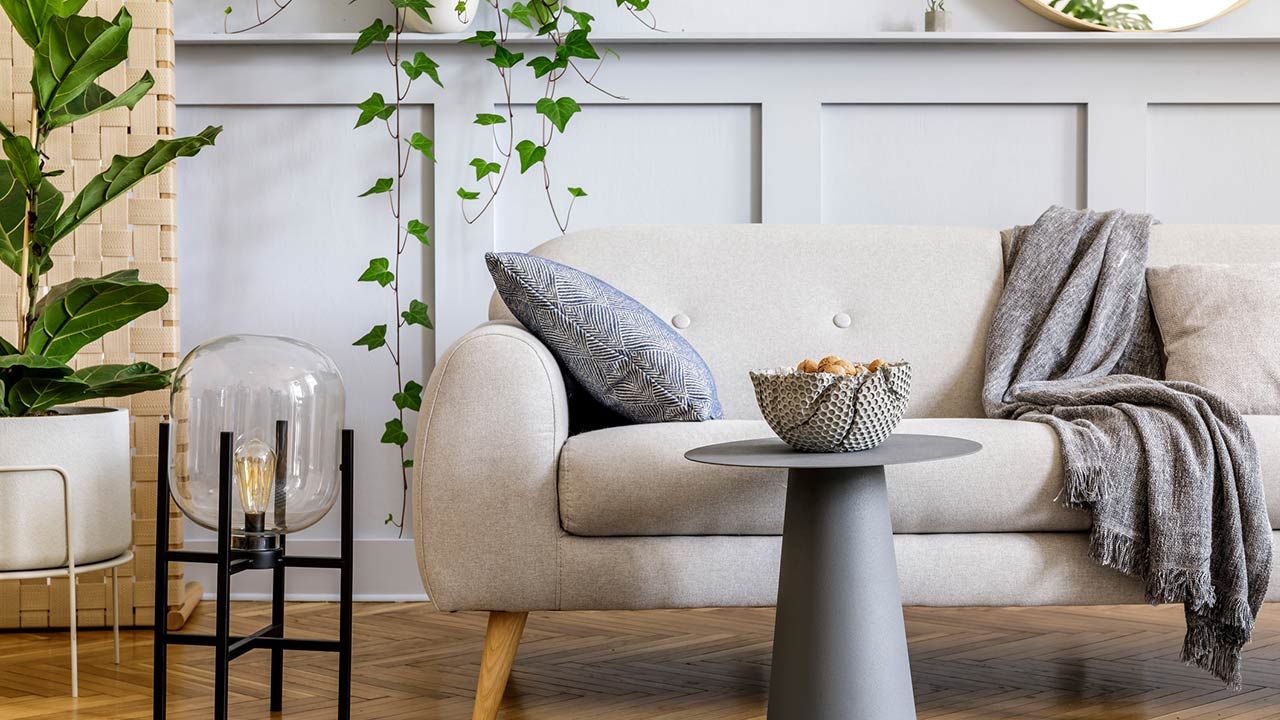DIY Chair Upholstering: Step-by-Steps You Can Totally Do!
Step 1: The Fun Part

We don’t know about you, but sometimes even the simplest and most fun DIY projects can seem daunting at first. Help yourself out of the DIY jitters by eating your vegetables last!
First, cruise to your local fabric store and pick out the perfect shade of canary yellow or grey ombre. Or browse a bajillion swatches online. You can even find rare and inspiring vintage fabrics of various yardage on etsy.com. You’ll need 2-5 yards depending on how much chair you have.
Once you’ve got the perfect nautical stripes for your guest room or florals for your breakfast nook, move to Step 2.
Step 2: Mise En Place

To maintain sanity (and fun factor) throughout the process start by gathering everything (we mean everything) that you’re gonna need:
Required: Fabric, sewing machine (in most cases), scissors, flathead screwdriver, pliers, seam ripper, staple gun, erasable fabric pencil, cell phone, tape measure, pinning pins, straight edge, large flat surface (work table or floor), nearby trash can for scraps and batting, spiked lemonade and/or coffee drink
Optional: tack nail strip and tack hammer or rubber mallet, cardboard strip, extra batting (upholstery and fiberfill)
Step 3: Paparazzi

Whip out that cell phone and snap away. Before taking anything apart, record the look of the chair and the way the pieces fit together. Feel free to document the entire process. Also, you’ll probably want to label the pieces as “back”, “front”, “bottom” etc with the fabric pencil before you forget. You can thank us later.
Step 4: Pop It Out or Rip It Off
Go ahead and pop out the upholster-able parts of the chair. You may have both the seat and the back to upholster or just one or the other. If it’s the whole chair, use that seam ripper to pull apart the stitching or that screw driver to pop out the staples.
IMPORTANT: Either way, do not rip the old fabric pieces as they come off!
These pieces are your pattern. They make life easy. Do not mess with this part of Step 4.
Step 5: Match It, Pin it, Cut it

Lay out the “pattern” pieces on top of your fabric. Mark the exact outlines with the fabric pencil, then mark 1-2 inches outside of that all the way around to help with pulling things taut.
Then pin, pin, pin all the way around. You cannot pin too much. We repeat. You cannot pin too much.
IMPORTANT: If your fabric has a big pattern, be sure to match the pattern edge to showing edge!
Then cut, cut, cut out your pieces. You can be sloppy-ish as these are not your final edges.
Step 6: Batting
If the batting on your chairs is worn and terrible, you lay on some new upholstery batting smoothed over what’s decently left of the old stuff, or punch that up with a little fiber fill underneath as needed.
Step 7: Sewing
If you have any questions or hesitations before sewing, use the old pieces again. Go back through your phone or check the labels you wrote. Then rearrange the pieces on the chair to see how the sewing lined up. If you used a seam ripper you’ll notice there’s at least a little extra fabric beyond the seam. This will be your extra ½ inch.
Once you’re (fairly) confident, lay the new pieces good side to good side and line up your edges. Re-pin. (You cannot pin too much.) Sew along the pins and markings, leaving that ½ inch edge.
If you’ve got a pull-over situation, as in the entire back of a chair, pull your pinned fabric cover inside-out over the back and check all your seams and edges before sewing. If the fit is good, go for the sewing. You can keep checking like this as you go.
If your upholstered chair has edges that require tacking, here’s where the cardboard strip comes in handy. Lay that strip on top of the two pieces you’re joining – these pieces should be laid flat, good side to good side. Again, leave the cardboard strip ½ inch inside the edge, parallel to the edge. Then staple that puppy in and fold the fabric over. You should have a clean beautiful edge.
IMPORTANT: If your fabric has a big pattern, be sure to match the pattern edge to showing edge!
Often the bottom of the chair requires less sewing and more pulling taut and tacking down underneath. Don’t staple one whole side. Instead, tack in the center of each side with one staple. Then tug and smooth the fabric into place as you tack along the underside. You might want to trim the excess once everything is thoroughly stapled. (Like pinning, you cannot staple too much.)
Step 8: Finishing It Off

Three things to keep in mind to finish things off: depending on the style of upholstery (just a bottom, just a top, whole chair, etc), you will either need to staple and tuck (as described above) or hem and corner.
If you’re really advanced, you can staple velcro strips to the underside of the chair and sew in (really well) a velcro strip on the underside of your hemmed bottom edges and voila!! You’ve got a removable, washable cover. Dang! Go you.









Leave a Reply
Want to join the discussion?Feel free to contribute!